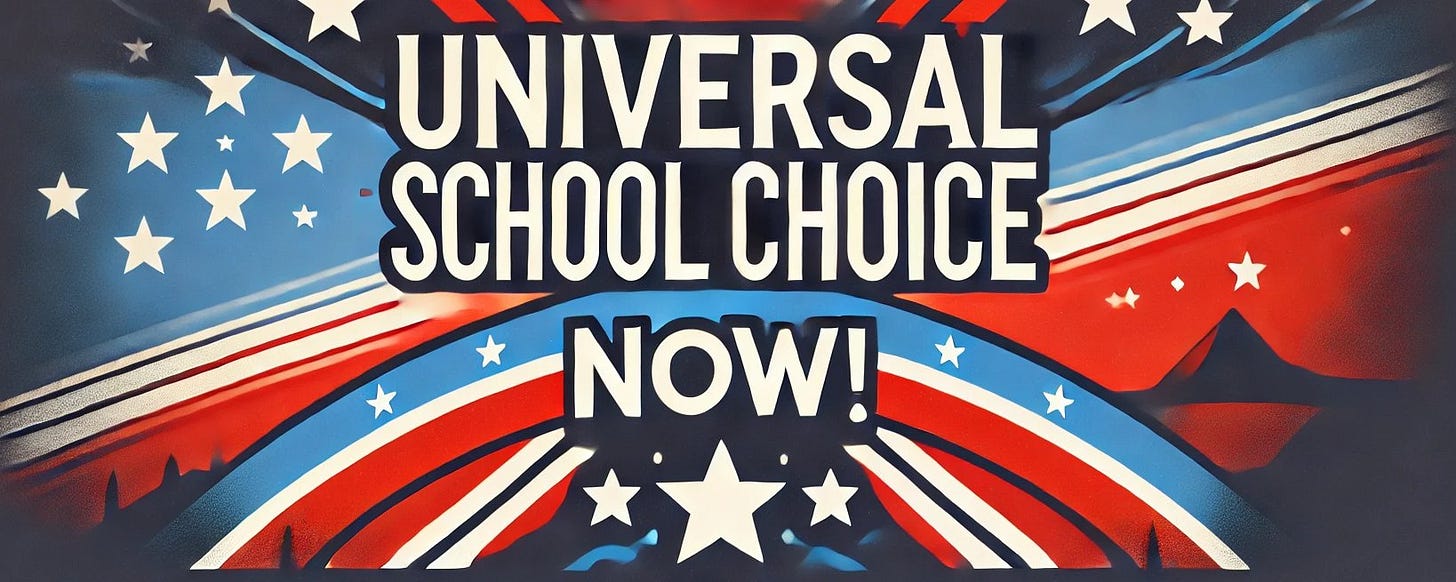Why Texas Needs Universal School Choice
How Education Savings Accounts Can Empower Families, Improve Outcomes, and Save Taxpayers Billions
Check out my latest article at X.com.
Despite a 42% increase in per-student education funding since 2011 in Texas, 8th-grade math proficiency has dropped by 40%.
As administrative costs and bureaucracy grow, less than half of education funding reaches teachers. This is not a teacher problem; it’s a system problem. The current government school monopoly prioritizes funding systems over outcomes, leaving too many students behind.
The solution is clear: universal school choice through Education Savings Accounts (ESAs).
For decades, the status quo has relied on a rigid, state-determined school finance formula. Taxpayer dollars are funneled into district-zoned public schools, regardless of whether those schools meet students' needs. Families are left with no flexibility, trapped by zip codes, and forced into a one-size-fits-all system.
While there are success stories, the overall picture is bleak, particularly for underserved communities. The incentives are broken, and the system has little reason to innovate or improve without competition or accountability. Texas families deserve better.
Some argue that vouchers are a sufficient solution. While they expand access to private schools by providing families with a set amount of funding for tuition, vouchers fall short in several ways. They often come with government-imposed regulations that stifle innovation in private schools, and they focus narrowly on tuition, excluding other educational expenses like tutoring, transportation, therapy, or homeschool resources.
This is where Education Savings Accounts stand apart. ESAs give parents control of the funding, which they can use for various approved educational expenses. Whether at a traditional "public" school, charter school, private school tuition, specialized therapy, transportation, tutoring, or homeschool materials, ESAs allow families to build a customized education for their child.
Unlike vouchers, ESAs empower parents to design an education plan that fits their child’s specific needs, ensuring a student-centered approach.
Critics often claim ESAs will harm public schools, but this fear is unfounded.
First, public schools will remain an option for families who prefer them. ESAs do not dismantle public education; they introduce competition and give families a choice.
Second, ESAs save taxpayers money. A universal ESA program in Texas could save nearly $20 billion annually, per my recent article with Texas State Representative Brian Harrison at the The Dallas Morning News.
These savings would provide a significant down payment to cut two-thirds of ISD maintenance and operations (M&O) property taxes, putting Texas on a path toward eliminating them.
That’s real relief for families while ensuring parents spend taxpayer dollars for improved student outcomes.
The monopoly school model incentivizes maintaining the system over serving students. By introducing competition through ESAs, public or private schools must innovate and deliver value to attract and retain students.
This realignment of incentives encourages efficiency, improves outcomes, and shifts resources where they are needed most: in the classroom. Teachers, who are often underpaid and undervalued, will also benefit. By reducing administrative bloat and prioritizing funding for classrooms, ESAs can lead to higher teacher salaries and more support for their critical work.
Some opponents suggest that local control is the answer, arguing that the state should get out of the way and let districts innovate.
While local control is a worthy principle, public schools are constrained by state and federal mandates, making it practically impossible under the current framework. ESAs, by contrast, empower families directly, providing ultimate local control, removing bureaucratic barriers, and giving them the freedom to choose what works best for their children.
The critics of universal school choice often resort to fearmongering, claiming that ESAs will devastate public schools or leave certain students behind. But the data and experience from other states with similar programs tell a different story.
Over 30 states have some form of school choice, and more than 10 states have implemented universal or near-universal ESAs. Public schools can and do thrive in competitive environments. Families who are satisfied with their local public school can stay, while those who need other options finally have a chance to find the right fit.
ESAs don’t take away choice—they expand it.
Texas has a chance to lead the nation in putting students first. By adopting universal school choice through Education Savings Accounts, we can empower families, improve outcomes, save taxpayers billions, and reduce the crushing burden of property taxes.
The current system has had decades to prove itself, and the results are clear: it’s not working for too many students. It’s time to fund students, not systems. Let’s build an education model that values every child’s potential and delivers on the promise of opportunity for all Texans.



